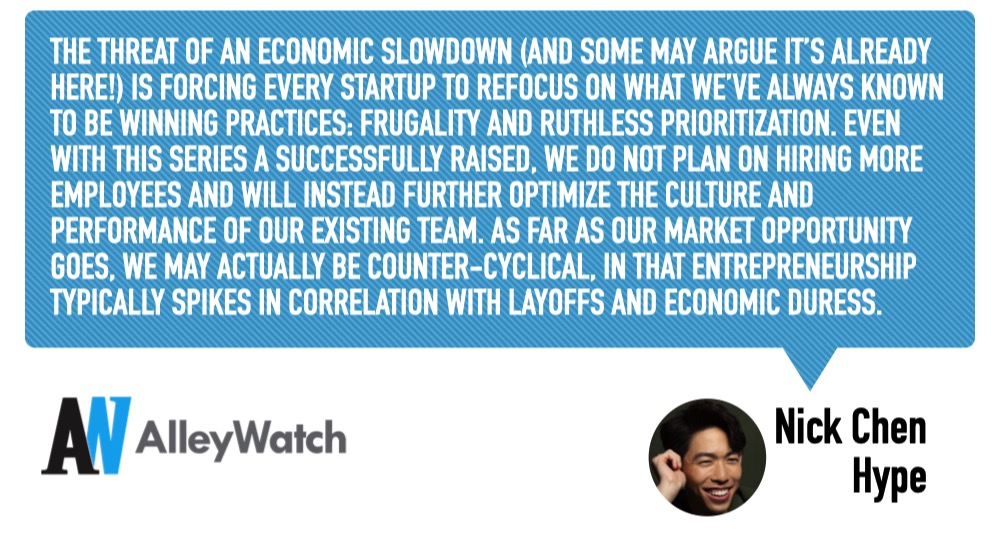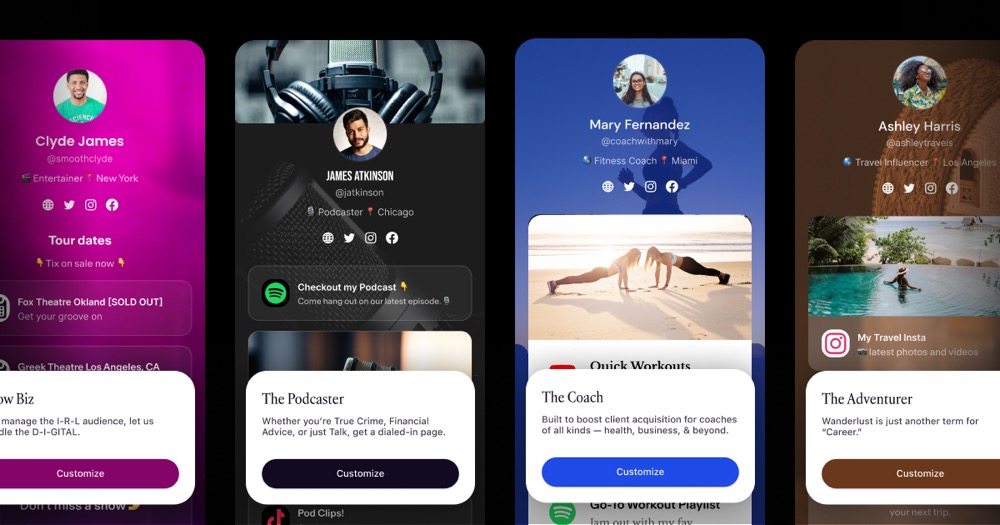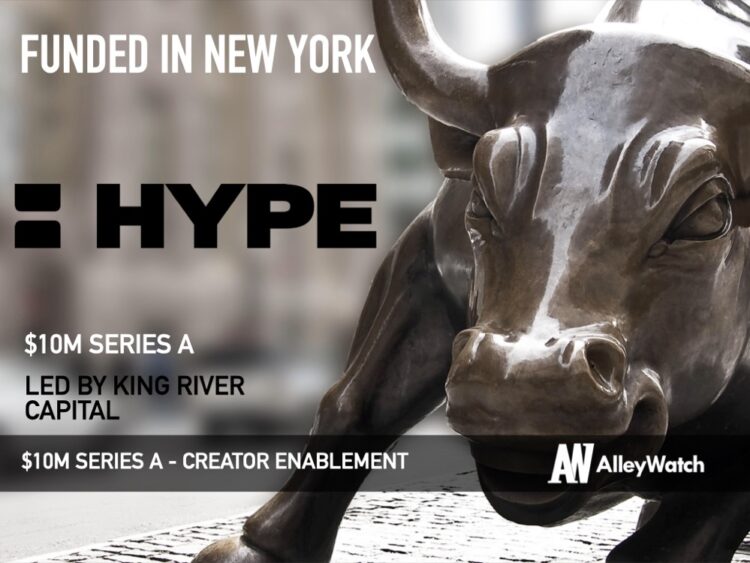According to a recent study from Adobe, one out of four people on the planet is contributing to the creator economy. The massive boost of people looking to diversify their income streams came as a result of the pandemic, leading to an increase in 165M people globally now engaged in this nascent market, fueled by access to affordable equipment and platforms. While this market has grown to $100B+ per year in revenue, competition is intensifying as creators look for ways to increase distribution and revenue while still connecting with their audience. Hype is an end-to-end platform that gives creators the infrastructure and tools to manage their businesses. Offering website-building capabilities, subscription, analytics, CRM, and direct messaging functionality, the platform provides creators with a centralized resource that empowers them to scale their businesses without having to worry about integrating disparate solutions. Hype has introduced a library of collections of specialized resources called HypeKits that are customized for creators operating in specific verticals like podcasting and dog training.
AlleyWatch caught up with Hype CEO and Cofounder Nick Chen to learn more about the business, the company’s strategic plans, latest round of funding, which brings the company’s total funding raised to $22M, and much, much more…
Who were your investors and how much did you raise?
We just announced our relaunch as Hype (previously Pico) and our $10M Series A led by King River Capital! I’m proud to say that we had several of our seed investors follow on in this new round including Bullpen Capital, Precursor Ventures, Bloomberg Beta, Tapestry VC, and Sterling Road.
Tell us about the product or service that Hype offers.
Hype gives anyone building a business the power to bring relationships with their fans and followers off social media to where there are more tools and freedom to communicate and monetize. This is made possible with Hype’s all-in-one platform, which enables creators to build a website in minutes, earn revenue from subscriptions and tips, send text message blasts to followers, and track key business analytics and insights — all from their phone.
With the funding, we also introduced a collection of what we call Kits — sets of recommendations within our product tailored to different types of creators, from coaches and podcasters to YouTubers and writers. Each Kit includes a pre-designed web page that can be further modified in Hype’s mobile website builder. Hype’s platform also includes an enterprise-grade CRM, revenue tools, website plugins and analytics that can help entrepreneurs better understand their needs as they grow.
What inspired the name change of Hype?
 When we first started building Pico in 2017, we were inspired by the movement away from advertising and toward audience revenue in the online publishing space – going from reliance on big data to a focus on oftentimes small but highly-engaged communities. That inspiration has stayed with us, but our product and category have both evolved so dramatically in these last six years that we felt it was an appropriate time to find a new name to excite the public and bring their attention to what we see as the future of small business. And what could be more exciting than hype?! Young creators have been showing us that hype can be more than a fleeting moment – if leveraged, it can be turned into the foundation for a durable business.
When we first started building Pico in 2017, we were inspired by the movement away from advertising and toward audience revenue in the online publishing space – going from reliance on big data to a focus on oftentimes small but highly-engaged communities. That inspiration has stayed with us, but our product and category have both evolved so dramatically in these last six years that we felt it was an appropriate time to find a new name to excite the public and bring their attention to what we see as the future of small business. And what could be more exciting than hype?! Young creators have been showing us that hype can be more than a fleeting moment – if leveraged, it can be turned into the foundation for a durable business.
How is Hype different?
Hype is the only platform in the creator economy that was built as a CRM first and foremost. That’s because we’ve long seen the creator economy as a foreshadowing of the new small business economy, and every successful small business needs a dependable CRM foundation upon which they can collect contact information, run marketing campaigns and earn revenue. We’ve also spent years investing in technology around recurring payments, making it possible for creators to earn passive income for premium content and experiences they offer.
What market does Hype target and how big is it?
From a top-down perspective, it’s almost incalculably large! Our grand ambition is to go after the broader services sector of the new small business economy. From CPAs to personal trainers, all kinds of traditional solo entrepreneurs are adopting the audience-first method of growth that creators have pioneered. In the meantime, the early adopters can be best represented by the more than 50 million creators in the world today, powering what analysts estimate to be a $100B+ industry.
What’s your business model?
Hype operates on a freemium model. Anyone can go to our website to launch their website for free in a matter of minutes using one of our new Kits. There are additional features and add-ons, from design customizations to text messaging plans, that creators can purchase depending on what best fits their needs. Those collecting tips or selling a subscription through Hype pay a percentage fee, while other add-ons carry varying monthly subscription fees.
How are you preparing for a potential economic slowdown?
The threat of an economic slowdown (and some may argue it’s already here!) is forcing every startup to refocus on what we’ve always known to be winning practices: frugality and ruthless prioritization. Even with this Series A successfully raised, we do not plan on hiring more employees and will instead further optimize the culture and performance of our existing team. As far as our market opportunity goes, we may actually be counter-cyclical, in that entrepreneurship typically spikes in correlation with layoffs and economic duress. We will continue investing in our product to make it the go-to platform for any creator looking to go full-time.

What was the funding process like?
The Series A materialized when we weren’t trying to raise a Series A! That’s in large part because of the connection I’m grateful for having formed with Megan Guy at King River Capital over the course of a year before she decided to lead this round. Although we inevitably have to pull out the spreadsheets to make any deal happen, it’s the personal relationships that really count when laying the foundation for a fundraise.
What are the biggest challenges that you faced while raising capital?
I’ve now raised several rounds of funding for this company, and the challenge is always the same (and universal across all startups, I suspect): having extensive conversations with numerous investors that don’t pan out before finding the true believers. I’ve learned to not take rejection personally. It’s ultimately a numbers game, and there’s no full-time matchmaker to help expedite the process!

What factors about your business led your investors to write the check?
At this point, investors need no introduction to the creator economy, but many are still on the sidelines, waiting for a sign that they’ve found The One to break through the noise of the space. In that context, I think our investors have long appreciated our differentiated vision around the intersection of the creator economy and small business economy, as well as the expansiveness of our feature set that backs up that vision. Although it’s still early days in our space, our investors recognize that we have all the right ingredients to become a household name in the coming years.
What advice can you offer companies in New York that do not have a fresh injection of capital in the bank?
For companies in a tough financial position, quickly cutting costs and reconfiguring resources is paramount. Being in New York gives founders the advantage of (1) being in a high-density networking environment for resources, advice, and potential partnerships; and (2) being in a time zone that makes it easy to work with more affordable offshore talent in South America, Eastern Europe, and Africa.
For companies in a tough financial position, quickly cutting costs and reconfiguring resources is paramount. Being in New York gives founders the advantage of (1) being in a high-density networking environment for resources, advice, and potential partnerships; and (2) being in a time zone that makes it easy to work with more affordable offshore talent in South America, Eastern Europe, and Africa.
Where do you see the company going now over the near term?
In the near term, we’re staying focused on delivering the best possible experience for ambitious creators looking to go full-time by monetizing their passion. This means sweating every detail around our platform’s user experience and adding more ways for creators to earn money. We also plan to explore opportunities for partnerships and acquisitions across the creator economy this year.
What’s your favorite coffee shop or location in the city to hold a meeting?
One of the many things I love about New York is the density of coffee shops designed with hygge in mind – makes for easy conversation in just about any neighborhood. If I’m tight on time, I default to the Devocion on 20th St, which is right across the street from the Hype office, or Saraghina Caffè in Fort Greene, if I’m working from home.





